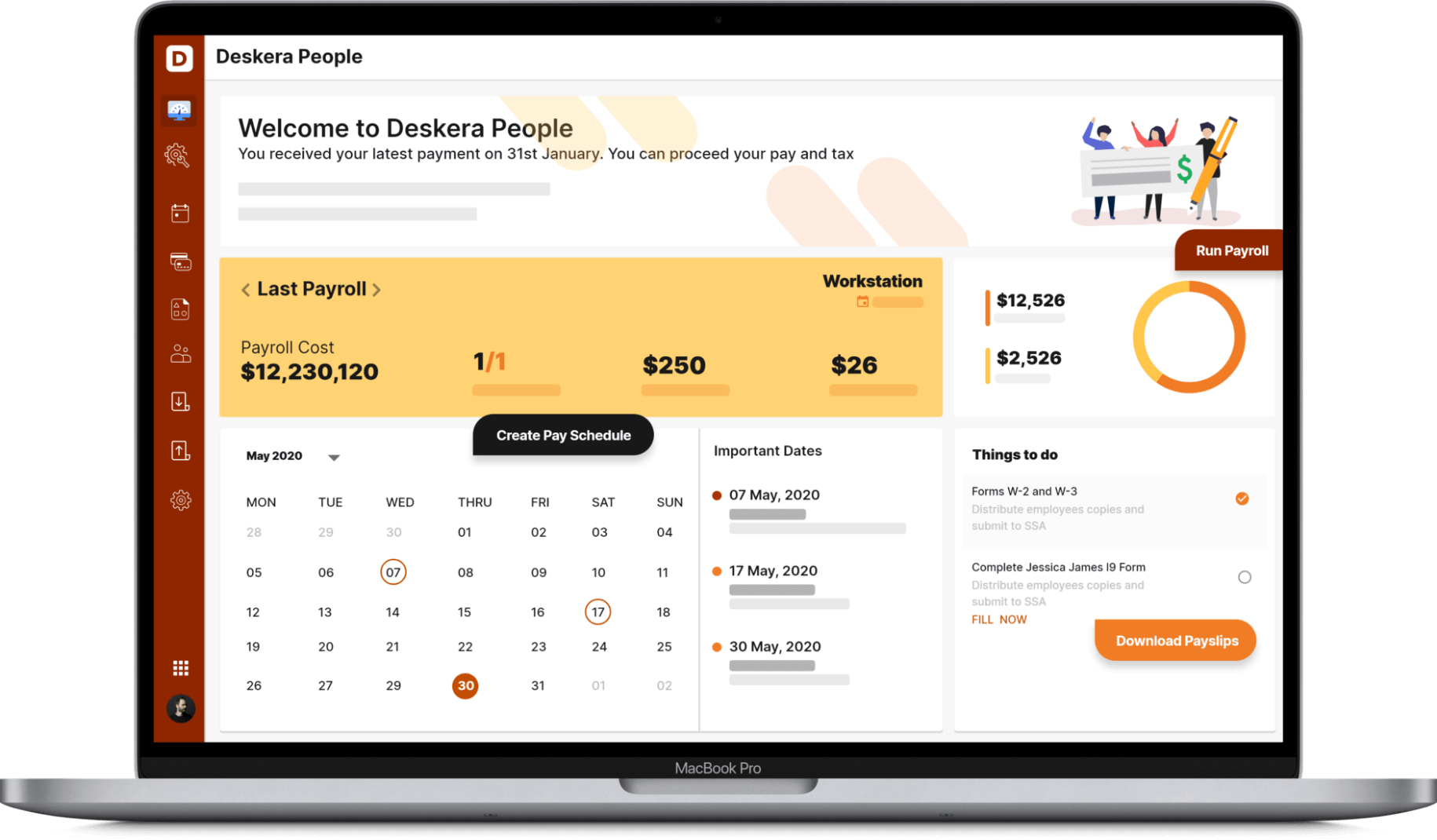A study conducted by Standford of 16,000 workers over nine months found that working from home increased their productivity by 13%. Through the same study, it was also found that workers also reported improved work satisfaction, with the attrition rates cut by 50%. These improvements were attributed to a quieter and more convenient working environment and working more minutes per shift due to fewer breaks and sick days.
In fact, a survey by ConnectSolutions also found that 77% of those who work remotely at least a few times per month show increased productivity, with 30% doing more work in less time and 24% doing more work in the same period of time.

It is thus no surprise that work-from-home has become more widespread and a preferred working method for several post the COVID-19 pandemic’s chaos when everyone was shifted to working from home abruptly and for months at a stretch out of necessity.
However, even before the global pandemic, work-from-home was being explored by businesses to improve their company culture, reduce organizational costs, and even move along with the changing times.
In today’s world, where everyone has access to ever-evolving technologies like Skype, FaceTime, Slack, Google Meet, Zoom, authenticator apps, and cloud computing, in addition to texting and email, it is no longer a necessity for an employee to be productive only by being in the office full-time. In fact, as discussed above, work-from-home has not only seen the same productivity but rather improved productivity from the employees.
Despite the growing popularity of the work-from-home culture, very few businesses have formal documents and policies in place to manage as well as control the process. In fact, studies have shown that more than 57% of employers with remote staff do not have a policy in place.
However, without a clear policy, there have been lots of cases of ambiguity and confusion in the workplace, which has led to workplace stress, and at times even delayed important tasks and hampered the overall productivity of the company or of one of its departments.
In order to make the most of the benefits of the work-from-home culture and reduce its drawbacks to the minimum, it is important for businesses that have work-from-home employees to have a work-from-home policy in place. This article will be your guide for the same by covering the following topics:
- What is a Work-From-Home Policy?
- Benefits of Working From Home
- Limitations of Working From Home
- Steps for Writing Work From Home Policy
- FAQs When Creating a Work From Home Policy
- How Can Deskera Help with Work From Home?
- Key Takeaways
- Related Articles
What is a Work-From-Home Policy?
A work from home policy is a document that outlines the duties, responsibilities, and expectations for employees working from home. A work from home policy thus acts as an agreement between the employer and employee regarding what is expected of them in terms of work.
Usually, a work from home policy is a part of the employee handbook and includes criteria like:
- Who is eligible to work from home?
- The approval process and key stakeholders involved
- Process of requesting remote work benefits
- Guidelines, regulations, and more
- Incentives (if any), sick leaves, privileged leaves, daily targets
- Reporting system
And so on.
A thorough work from home policy is one that sets the right expectations and lays down the infrastructure that supports remote work and mitigates its challenges.
Benefits of Working From Home
Work from home method of working as well as employment can be beneficial to the employer, the company, and even to the environment. In this section of the article, you will be taken through the core benefits of working from home, thus giving you the “why” for proactively creating the work from home policy of your company and thereby empowering the employees to work remotely.
Saves Commute Time and Resources
By allowing work from home mode of working, employers would be playing a major role in saving their employees’ commute time, thereby making them happier, more relaxed, and more productive. An increase in the productivity of the employees would have a direct and positive impact on the company’s revenue, net profit, and cash flow.
Additionally, with commuting removed from the equation, the resources used for the same- either through public transportation or private transportation would be saved significantly, making work from home a more environmentally friendly option.
Also, with employees not required to commute, companies that compensate for the incurred commuting expenses will no longer have to bear that business expense, thereby saving on their operating expenses, improving their cash flow, and even increasing their net profit ratio.
Builds Trust
A survey conducted by the Harvard Business Review found that 58% of people say that they trust strangers more than their own boss. By letting your employees work from home, you as the employer and as the boss would be taking a major step in expressing to your employees that you trust them to do their jobs sincerely.
This will help in building an emotional bond between you and your employees, therefore even helping you in retaining top talents, reducing employee turnover, and saving on time and costs of rehiring new employees.
Higher Loyalty
The FlexJobs’ 6th Annual Salary Survey revealed that 79% of the employees said that they would be more loyal to their company if it provided them flexibility. 32% of the employees were even found saying that they left a job because of the lack of flexibility. This survey thus highlights how by giving flexibility to your team and in their schedules will help in building employee loyalty as well as in reducing attrition.
Improved Focus
One of the other important advantages of working from home is the lack of distractions like water-cooler gossip, incessant small talks, and unnecessary meetings. A Harvard Business Review study found that remote employees tend to contribute almost a full day more productivity per week as compared to employees in an office.
An improvement in the focus of the employees will elevate the performance of the employees and have a direct impact on your gross profits and income statement.
In fact, increased focus of the employees will help in minimizing errors as well, be it in the analysis of the marketing KPIs and financial KPIs, or in the content creation for landing pages, content marketing, Instagram marketing, or in the auditing of the financial transactions of your business.
Reduces Sick Leaves
Several data suggest that remote employees decrease the use of sick days by 6% per year. This is because even if an employee gets sick, he or she is less likely to spread that illness to others due to the work-from-home method of working that has them safely isolated in their homes.
Well-Rounded Employees
Employees who have healthy family lives, social lives and who also have the time to spare for their passion projects and hobbies are better workers.
An employee who is working from home is most likely one who will be able to pick up his or her child from school, can dedicate a few hours weekly with his or her friends, and is finally able to enroll in that extra class like programming or designing that he or she has wanted to take for so long.
An employee who is fulfilled in other areas of their lives tends to be better at their work too, and this is one of the main benefits of working remotely.
Saves Business Funds
According to a report by FlexJobs, employers can save $22,000 per remote worker per year, even if your entire team is not remote. This is because if your employees are working from home, then you would be able to reduce several of the operating costs of your business like rent, furniture, janitorial services, utilities, stationery, coffee, etc.
Limitations of Working From Home
While there are numerous benefits of the work from home method of working and, therefore, of the work from home policy, it does not come without its own share of limitations. In this section of the article, you will be informed of these downsides so that you can safeguard your work from home policy against them.
Social Isolation
One of the biggest challenges faced by a remote worker is social isolation. According to a report by Buffer, 19% of remote employees stated isolation as their #1 problem while working from home.
Thus, keep this in mind and ensure that your work from home policy has tips about combating social isolation or have a designated number of days allowed for remote employees to visit the office and interact with the team.
No Boundaries
Another of the most frequent challenges is that employees who work from home have no concrete boundaries between work and play, i.e., between their professional and personal lives. This is because when their work is accessible 24 x 7, it becomes hard for them to fully detach themselves from work, not check one more email, and not get some more work done post-dinner.
However, establishing boundaries between work and play is important for the mental peace of the employees, also helping them rejuvenate to tackle the work the next day. Your work from home policy should also discuss suggestions on how your employees can and must keep boundaries between their work and play.
Homely Distractions
While employees working from home are able to save themselves from office distractions, they continue to remain susceptible to homely distractions like TV, household chores, guests, and so on. Additionally, some of the employees make the mistake of working from their beds, which makes them less productive.
Eliminates Serendipitous Encounters
One of the other big limitations of working from home is that it eliminates the possibility of spontaneous interaction between people from different organizations. This is especially true for the companies that have amazing break rooms, but with remote working, the employees would no longer be able to use this.
Elimination of such serendipitous encounters can be a big loss for you, as it does take away ideas, opportunities, and partnerships that otherwise would have been very beneficial, with improvements seen in your financial statements, financial KPIs, and business metrics.
Steps for Writing Work From Home Policy
Now that you are well aware of the benefits as well as the limitations of working from home, it is time for you to design a work from home policy that will optimize on the benefits and mitigate the risks and limitations of remote work, thus setting up your employees and your business for success. Some of the things that you should definitely include in your work from home policy are:
Step 1: Define the Purpose
You should define the purpose for writing the work from home policy document. In this step and section of your work from home policy, you should communicate the benefits of creating such a document and how it will be beneficial to you - the employer, and to your employees to get the most out of remote work.
Step 2: Define the Scope
After discussing the purpose of your work from home policy document, you should define the scope of the document. In this section of the document, you will define who is eligible to work from home and who will have to be working from the office. It is important to mention this because not all jobs can be handled remotely, and your hybrid work model should be clearly available for all employees to examine.
While deciding the eligibility criteria, you should take into consideration account software limitations or security risks associated with employees who work from home. Additionally, your eligibility criteria can also have criteria like allowing only those employees to work from home who have been with the company for at least six months or letting only those employees who have been meeting 90% of their goals can work from home.
Step 3: Outline the Request Process and Establish an Approval Process
After establishing your eligibility criteria for employees who can work from home, it is time to establish an approval process for those employees. Thus, in this section of your work from home document, you will clearly outline the personnel and process for approval.
By going through this section, your employees should know how to request work from home privileges, if there are any forms to be filled, who will be approving their request to work from home, and the timing for approval. This section of the policy should hence lay out the exact steps that an employee would be following in order to have the option of working from home.
Step 4: Set Working Hours
It is essential that your work from home policy outlines the regular working hours or the hours your employees will have to be online. Having a regular schedule will help in ensuring that your employee is productive throughout the day and is available if he or she is needed for any sort of communication or collaboration.You can encourage your remote employees to use time tracking software that will increase their productivity.
A regular schedule is one that will usually involve setting a range of working hours. For example, employees are expected to be working and available from 9 a.m. - 5 p.m.
In order to ensure stability and consistency, companies usually set up the same working hours for the work from home employees as they have set up for the standard office workday employees. In case you want to keep the schedule flexible for your employees, then you might set the total number of hours that you expect your employees to work for you. For example, employees are expected to work a total of 8 hours per day.
Note: In the case of hourly, non-exempt employees, they will still need to accurately record all hours worked and submit these records to their managers. In your work from home policy hence, you will need to set up a system through which hourly employees have a way to accurately record their time while working remotely. Hourly employees will also have to request their manager’s approval to work overtime.
Step 5: Set Acceptable Work From Home Days
Your work from home policy should outline when exactly your employees can avail the benefit of work from home policy. It should answer questions like:
- Can the employees take work from home days as needed? Or has the company set a day of the week or month dedicated to working from home?
- Are there any particular days when work from home would not be permissible?
Answering such questions will help ensure that there are no conflicts or confusion later on.
Step 6: Create Attendance and Availability Standards
One of the limitations of working from home is that you would not be able to just pop by someone’s desk and get their input or contributions or help for a time-sensitive project. At such times, you might feel that the majority of your time is spent hunting people down, hitting them up on email, text message, or Slack.
This feeling can be minimized by setting standards around when and how the team members will be available. Additionally, having attendance standards will help ensure that your employees who are working from home are not slackening off and are focused as well as dedicated to their work.
Step 7: Streamline Communications Channel
Considering that in-person communication would no longer be possible for your work-from-home employees, it is integral to set up communication channels and their respective primary purposes of ensuring smooth communication and working. This might also mean sunsetting redundant channels.
For example, if a company is using Slack as well as G-chat, it should ask its employees to use either one in order to reduce inefficiency.
A typical breakdown of communication channels for work from home employees, along with their primary purposes, might be:
- Slack- Rapid, lightweight communication, and sometimes even for timely announcements.
- Email- For longer communications, team-wide announcements, and internal programming like news digest.
- Company Intranet- Frequently asked questions, company policies, and HR resources.
- Skype- Video Conferencing
- Deskera People- For having a common calendar for all the tasks along with who is assigned what and the progress in their respective workflows is also recorded on Deskera People.
And so on.
Step 8: Give IT Support
Employees who work from home, they rely on technology more than ever. From performing the most basic communication to his or her job functions, they will require a working IT set-up and support.
Providing IT support is not only more important but logistically also more difficult for a dispersed workforce. This is especially true for employees who have on-boarded your company remotely. In case of them, you will have to make extra sure that they and your company’s IT can effectively communicate with each other.
You should also create a helpline and a ticketing system dedicated to working from home employees. Additionally, you should lay out the steps that an employee should follow in order to escalate their technology issues.
Step 9: Maintain Security Standards
In your work from home policy, you should also clearly specify if you want your work from home employees to use a VPN (virtual private network) software to protect their company system from hackers or other security breaches. To enable this, you may want to invest in an encrypted Virtual Private Network. This is especially important if your work from home employees works from a cafe or any co-working space.
Also, you should instruct your employees to avoid vulnerable public Wi-Fi. Instead, encourage them to use hot-spots or provide encryption software. Also, make sure that your employees keep their work data on their work computers and not on their personal ones. This will further ensure the confidentiality of your company’s work and data. Most commonly, this also means that employees would be able to answer their work emails through their work devices only.
Step 10: Continue Internal Communication Programs (Including All-Hands Meetings)
To ensure the smooth functioning of any business, especially in the case of having employees who work from home, it is important to have constant communication. This can be in the form of email newsletters, Slack updates, and weekly or twice-monthly all-hands meetings.
While this might be difficult to maintain, you should strive to do so even if the format changes. In fact, even a weekly email from the company leadership or shared slide presentation can be just as effective.
Step 11: Maintain a Connection to Your Culture
Continuing the perks and amenities as much as possible will help in maintaining a sense of normalcy and continuity with your employees, especially in scenarios where your employees are forced to work from home over safety and health concerns like, for example, the COVID-19 pandemic.
This will also keep them motivated and connected to your company and will help in ensuring that their productivity does not drop, increasing the chances of your company earning higher net profits and securing positive customer feedback as well as customer loyalty and customer retention.
Step 12: Create a Dress Code
In your work from home policy, you should create a dress code because though the employees working from home being able to wear sweats throughout the day might sound like a perk of this form of working, it is not advisable.
This is because even your work from home employees might have to interface with customers, clients, or partners via video conferencing, and thus being aware of acceptable wardrobe in these situations is a must for them.
Step 13: Record Acknowledgement of Receipt
Considering that your work from home policy is going to be a form of agreement between you and your employees and therefore subject to revocation if the terms are not met, you should get a digital signature of your employees on the same. Through the employees’ digital signature, you would be recording the employee receipts.
Step 14: Gather Feedback and Iterate
There is no guarantee that you will get the correct and perfect work from home policy at a go. It is thus important that you create avenues of feedback for the same from your managers and work from home employees alike. It is preferable to keep your feedback anonymous, and once you have them, to implement the recommended changes as and wherever appropriate.
FAQs When Creating a Work From Home Policy
- How can the employer ensure team productivity in work from home setting?
The employer can ensure team productivity in a work-from-home setting by giving his or her employees the tools, information, and communication channels that they will need to work efficiently and successfully at home.
Work from home involves a degree of change management, so the employer will have to arm his or her employees with best practices so that they can quickly adapt to the new circumstances. Additionally, the employer should also set up a regular schedule of video conferencing at the start and end of the workday to increase accountability on the part of employees.
- What are the characteristics of an effective work from home policy?
Some of the most common and important characteristics of an effective work from home policy are:
- Clearly communicates expectations, responsibilities, and conduct to the employees.
- Should have the tactical tips to help employees optimize their work from home environments.
- It should be designed in a manner that it sets up the employees for success.
- How can the company culture be maintained with work-from-home employees?
It is important to ensure that your work-from-home employees feel appreciated and cared for despite the fact that they are working outside of the office. Some of the ways of ensuring this is by staying connected with them via multiple touch-points and channels, finding ways to include them in company-wide events, finding ways to extend in-office amenities like healthy snack delivery or catered meals, giving them gift cards, etc.
- How can the hourly employees that work from home be monitored?
To monitor remote, hourly employees, the company should use a mobile attendance system like Deskera People. Such software will ensure that the hourly employees are tracking their times accurately and that they are being compensated accurately as well. In addition to this, the frequency of progress check-ins can be increased for additional accountability too.
- How can the success of work from home policy be measured?
Measuring the success of your work from home policy ultimately depends on your goals for the same. For example, if your goal is increased engagement, then KPIs like employee turnover rates, employee happiness, and employee net promoter scores would be the metrics to analyze.
However, if your goals revolve around your marketing objectives, like higher conversion rates of leads into sales, then tracking KPIs like ARR and ACV will be useful.
- What are some tips for employees that are working from home or are going to transition to working from home, so as to ensure their productivity is maintained and increased?
Some of the tips that the employer should give to his or her employees that are working from home to help maintain as well as increase their productivity are:
- Employees should maintain their morning routine like waking up at the same time, doing their exercises at the usual time, etc.
- Employees should re-purpose their commute time for self-care activities like reading, meditating, practicing yoga, journaling, etc.
- Employees should dress for success, as dressing comfortably yet professionally will keep you in the right mindset to be productive.
- Employees should focus on their nutrition as this will help them in maintaining their focus and energy. To maintain their nutrition, they should avoid food with sugars, artificial ingredients, or empty calories.
- Employees should have a dedicated workspace having an environment that will foster their productivity. Usually, such a workspace is one that is quiet, comfortable, free of distractions, and usually different from where you eat or relax.
- Employees should spare time to go outside as taking breaks will only benefit them in terms of their focus and well-being. In fact, they should walk around the block or outside on their balcony or patio during their breaks.
- Employees should set regular work hours so that they are balancing between their personal and professional life.
- Employees should not watch the TV during their working hours and should even resist the urge to turn it on just for the background noise as it will lead to distractions.
How Can Deskera Help with Work From Home?
With Deskera People, a cloud-based automatic software, you would be able to create and manage your company’s job openings in one place and even be able to make job form questions using custom fields and test applicants based on your requirements for work from home employees. Once the applicants have filled out the form, they will be automatically assigned to the correct stage in the job pipeline.

Once the work from home employee is hired, he or she will be able to easily clock in and clock out attendance through the dashboard of Deskera People, with the same software tracking their number of working hours as well.
Additionally, with Deskera People’s Direct Deposit Service, you would also be able to start the payment immediately after processing the payroll. All that you will need for this is the bank details of your employee.
Key Takeaways
Work from home policies has become more attractive to employers as well as employees alike if it is regarding a role that can be fulfilled remotely. This is because work from home has the following benefits:
- Saves commute time and resources
- Builds trust
- Higher loyalty
- Improved focus
- Reduces sick leaves
- Well-rounded employees
- Saves business funds
However, along with these benefits, there are also some accompanying limitations, which are:
- Social isolation
- No boundaries
- Homely distractions
- Eliminates serendipitous encounters
Thus, your work from home policy should be designed in such a manner that it makes the most of the benefits while simultaneously mitigating the limitations.
Lastly, work from home has become today’s trend and is made possible and easier due to automation offered by software and apps like Deskera People, which will even let your employees be able to view their payslips, apply for time off, and file their claims and expenses online.
Related Articles















